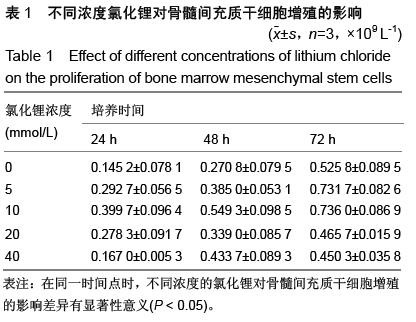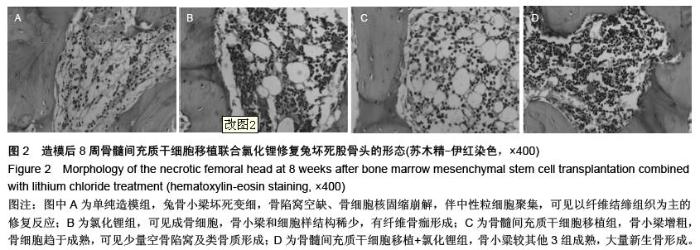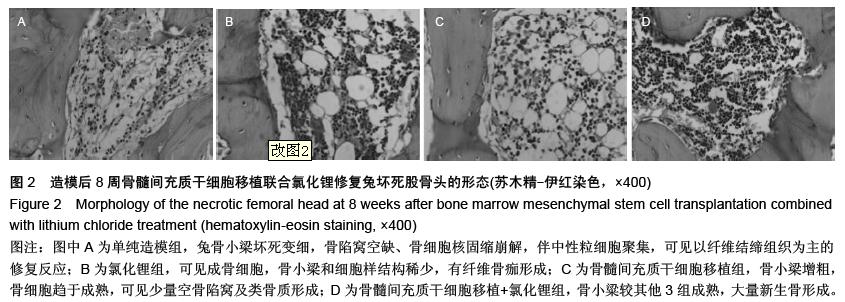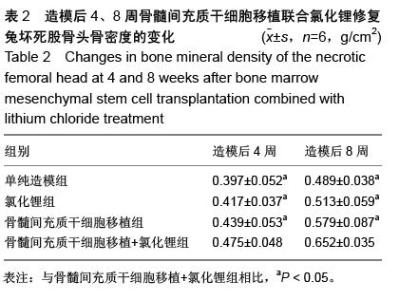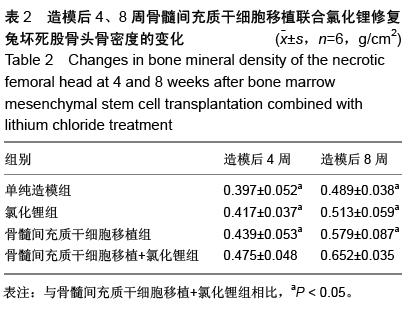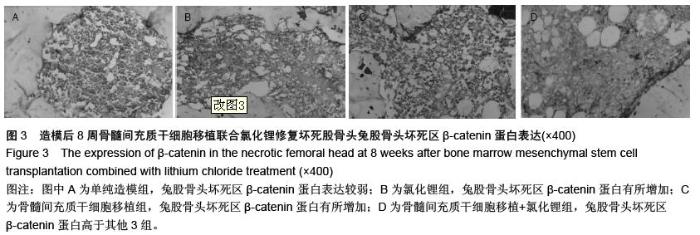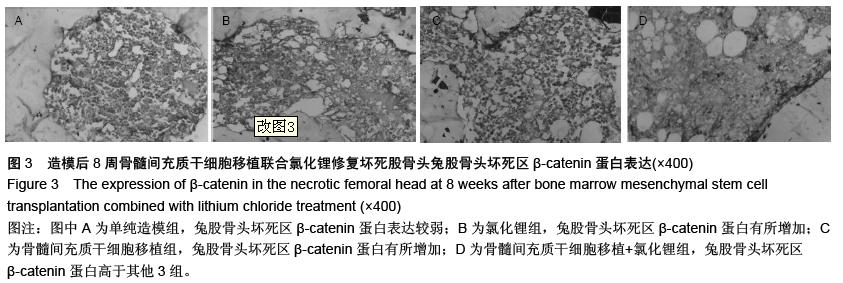| [1] 李平,刘宇强,卢向东.股骨头缺血坏死病因研究[J].中国药物与临床,2014,14(3):323-325.
[2] Bittersohl B, Zaps D, Bomar JD, et al. Hip arthrodesis in the pediatric population: where do we stand? Orthop Rev (Pavia). 2011;3(2):e13.
[3] Yang J, Wang S, Meng Q, et al. Report: Osteocyte enhancement function of bisphosphonates in prosthetic replacement. Pak J Pharm Sci. 2015;28(3 Suppl):1167-1169.
[4] 康鹏德,裴福兴,王坤正.股骨头坏死的研究和治疗进展[J].中国骨与关节损伤杂志,2005,20(1):65-68.
[5] Pittenger MF, Mackay AM, Beck SC, et al. Multilineage potential of adult human mesenchymal stem cells. Science. 1999;284(5411):143-147.
[6] Trento C, Dazzi F. Mesenchymal stem cells and innate tolerance: biology and clinical applications. Swiss Med Wkly. 2010;140:w13121.
[7] Kadiyala S, Young RG, Thiede MA, et al. Culture expanded canine mesenchymal stem cells possess osteochondrogenic potential in vivo and in vitro. Cell Transplant. 1997;6(2):125-134.
[8] Yang W, Both SK, van Osch GJ, et al. Performance of different three-dimensional scaffolds for in vivo endochondral bone generation. Eur Cell Mater. 2014; 27: 350-364.
[9] He X, Semenov M, Tamai K, et al. LDL receptor-related proteins 5 and 6 in Wnt/beta-catenin signaling: arrows point the way. Development. 2004;131(8):1663-1677.
[10] Mustika R, Budiyanto A, Nishigori C, et al. Decreased expression of Apaf-1 with progression of melanoma. Pigment Cell Res. 2005;18(1):59-62.
[11] Ross AW, Bonner J. Activation of Wnt signaling using lithium chloride: inquiry-based undergraduate laboratory exercises. Zebrafish. 2012;9(4):220-225.
[12] 施新猷,顾为望.人类疾病动物模型[M].北京:人民卫生出版社,2008.
[13] 彭仲杰,宁亚功,李峻辉,等.股骨头缺血性坏死发病机制研究进展[J].中国骨伤,2004,17(4):64-65.
[14] 李忠,陈歌,王治,等.髓芯减压复合自体骨髓间充质干细胞移植治疗股骨头缺血坏死[J].中国矫形外科杂志, 2012, 20(5):411-414.
[15] 胡钟旭,李东卿,李贵涛,等.富血小板血浆联合骨髓间充质干细胞治疗家兔股骨头缺血坏死的研究[J]. 中华损伤与修复杂志(电子版),2014,9(1):22-26.
[16] Gafni Y, Turgeman G, Liebergal M, et al. Stem cells as vehicles for orthopedic gene therapy. Gene Ther. 2004;11(4):417-426.
[17] Prockop DJ. Marrow stromal cells as stem cells for nonhematopoietic tissues. Science. 1997;276(5309): 71-74.
[18] Tao H, Rao R, Ma DD. Cytokine-induced stable neuronal differentiation of human bone marrow mesenchymal stem cells in a serum/feeder cell-free condition. Dev Growth Differ. 2005;47(6):423-433.
[19] Gordon MD, Nusse R. Wnt signaling: multiple pathways, multiple receptors, and multiple transcription factors. J Biol Chem. 2006;281(32):22429-22433.
[20] Yang Y, Mlodzik M. Wnt-Frizzled/planar cell polarity signaling: cellular orientation by facing the wind (Wnt). Annu Rev Cell Dev Biol. 2015;31:623-646.
[21] Tulac S, Nayak NR, Kao LC, et al. Identification, characterization, and regulation of the canonical Wnt signaling pathway in human endometrium. J Clin Endocrinol Metab. 2003;88(8):3860-3866.
[22] Matsuzaki E, Hiratsuka S, Hamachi T, et al. Sphingosine-1-phosphate promotes the nuclear translocation of β-catenin and thereby induces osteoprotegerin gene expression in osteoblast-like cell lines. Bone. 2013;55(2):315-324.
[23] Logan CY, Nusse R. The Wnt signaling pathway in development and disease. Annu Rev Cell Dev Biol. 2004;20:781-810.
[24] Bajpai S, Feng Y, Wirtz D, et al. β-Catenin serves as a clutch between low and high intercellular E-cadherin bond strengths. Biophys J. 2013;105(10):2289-2300.
[25] Koay MA, Brown MA. Genetic disorders of the LRP5-Wnt signalling pathway affecting the skeleton. Trends Mol Med. 2005;11(3):129-137.
[26] Abu-Baker A, Laganiere J, Gaudet R, et al. Lithium chloride attenuates cell death in oculopharyngeal muscular dystrophy by perturbing Wnt/β-catenin pathway. Cell Death Dis. 2013;4:e821.
[27] Tang GH, Xu J, Chen RJ, et al. Lithium delivery enhances bone growth during midpalatal expansion. J Dent Res. 2011r;90(3):336-340.
[28] De Boer J, Wang HJ, Van Blitterswijk C. Effects of Wnt signaling on proliferation and differentiation of human mesenchymal stem cells. Tissue Eng. 2004;10(3-4): 393-401. |

